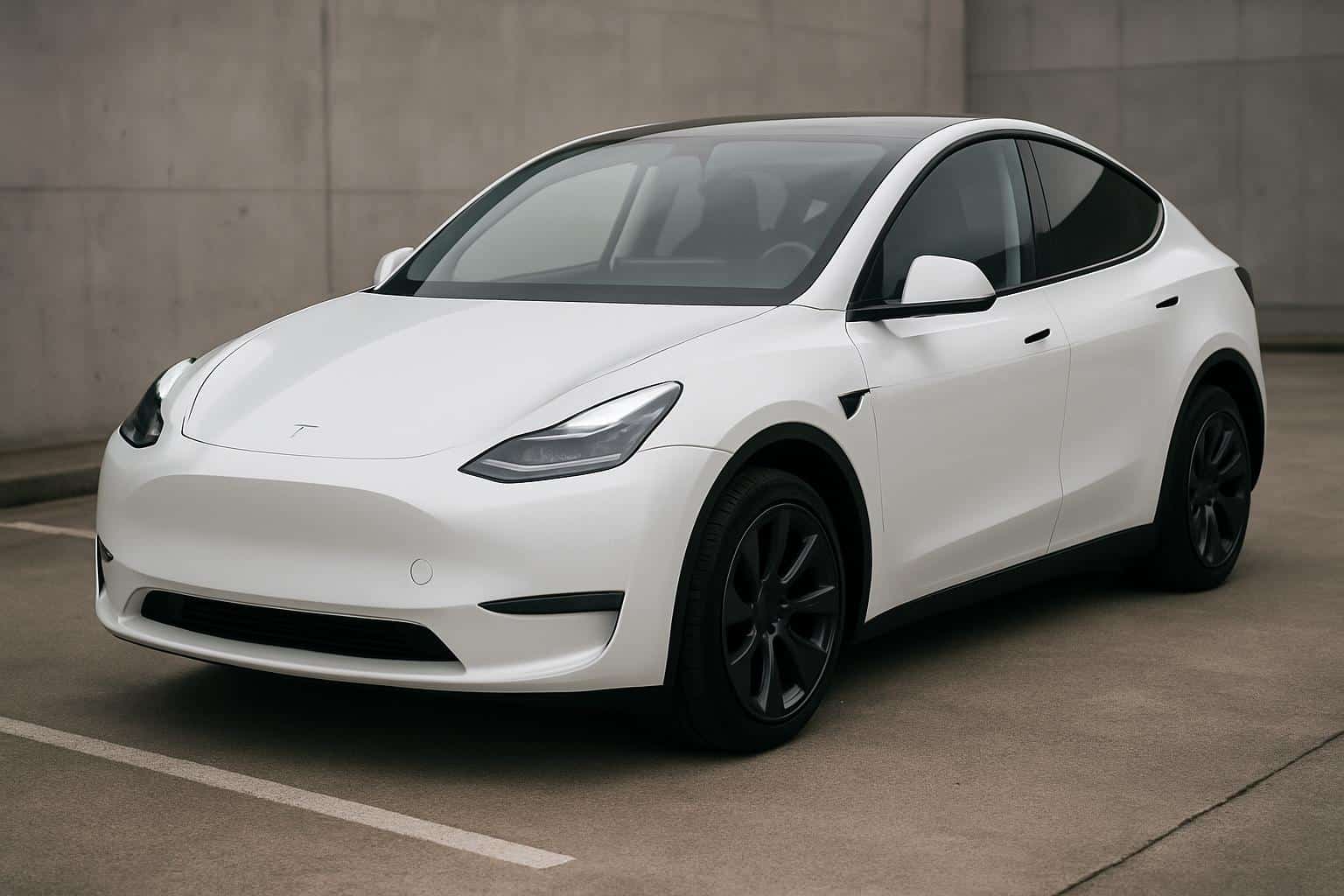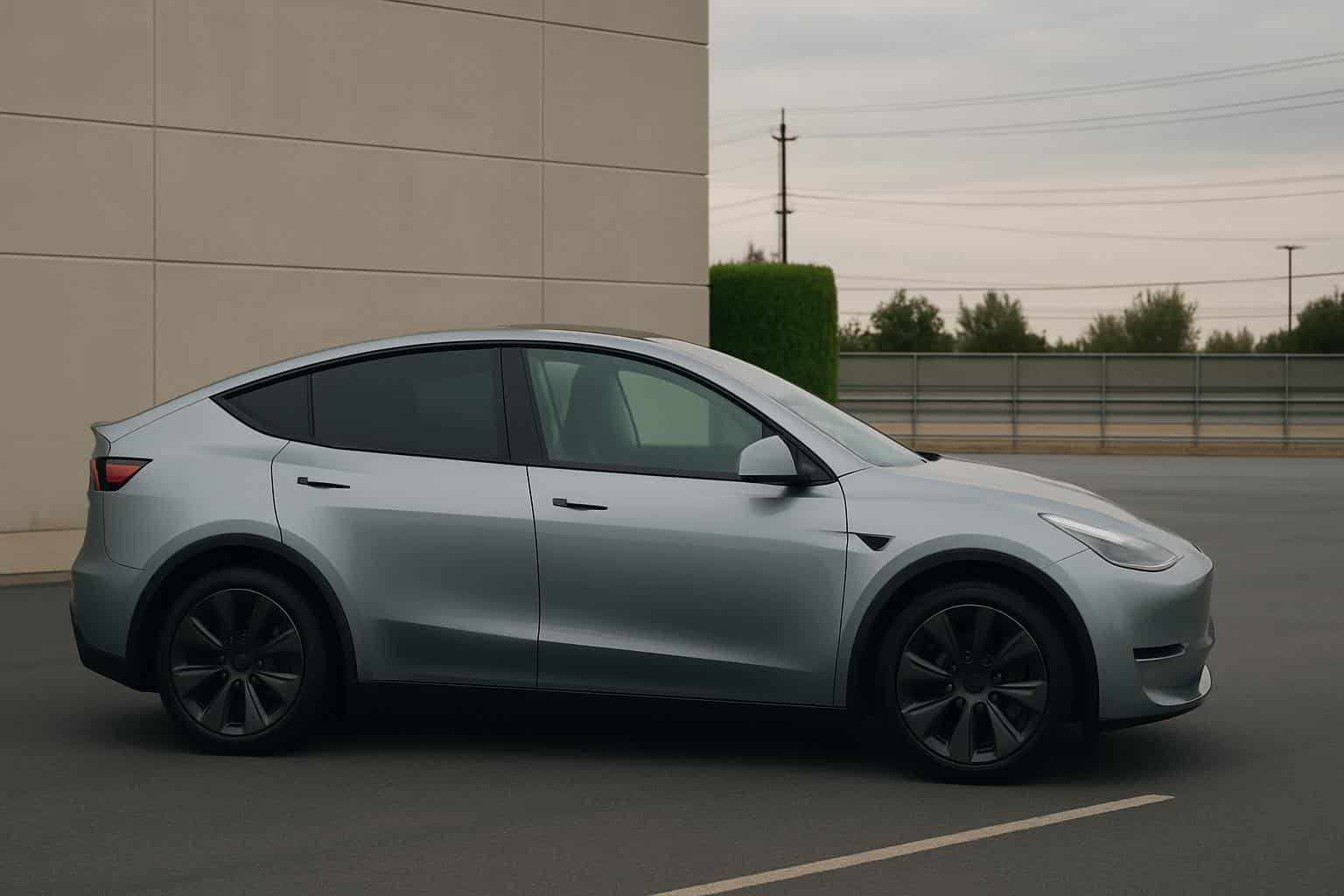Tesla has unveiled at long last a lower-priced Model Y, its latest electric crossover sport-utility vehicle, aimed straight at the luxury car market where aspirations for battery-powered vehicles run high.
The new all-electric SUV is based on the same platform as Tesla’s flagship sedan, but shares two-thirds of its parts content and other bits. So the question is: Do the savings of that Standard trim make up for its compromises? On paper, that discount is substantial. In real life, the calculus is a function of how you drive, what you value and how long you expect to keep the car.
What You Get and What You Lose with the Standard Model Y
The headline grab is obvious: the Standard Model Y undercuts the next trim up by around $5,000. That makes the car more accessible to more shoppers, particularly those cross-shopping other compact luxury SUVs with similar monthly payments.

The trade-offs, however, are hardly inconsequential. Based on the specs that Tesla published, you’ll get a sizable reduction in range and performance when compared with the higher-range rear-wheel-drive model: estimated 321 miles of range versus about 357 miles; 0–60 mph times around 6.8 seconds versus 5.4 seconds — and slightly slower peak charging, with up to about 160 miles added in a fast-charging stop versus roughly 182 miles for the step-up trim.
Equipment differences are equally noticeable. You can look to the Standard trim, which ditches some of the nicer touches like a panoramic glass roof, upgraded audio (think seven speakers instead of whatever kind of surround sound setup they’ve got going with a subwoofer), and rear luxury like a display or heated second-row seats. You’re also staring down at smaller wheels, less interior convenience and a simpler suspension tune. There are a few comfort items that normally come as standard in the brand’s higher trims, but don’t get included here — ventilated front seats, ambient lighting and advanced filtration.
If you live for long highway stretches, the delta in battery capacity and charge time will count. The lack of creature comforts can be a little more pervasive than the performance gap, especially if you’re primarily an urban commuter who does most of your charging at home.
The Real Cost Beyond the Sticker Price for Model Y
Where the Standard Model Y can still succeed is total cost of ownership. With average U.S. residential electricity prices and typical EV efficiency, someone driving 12,000 miles a year might expect to pay $500–$700 or so for the energy consumed — versus more than $1,500 in fuel costs to power a gas SUV at spot national average pump prices. That annual gap — typically somewhere between $800 and $1,200 — accumulates quickly on top of reduced routine maintenance costs claimed for EVs by organizations like Consumer Reports.
EV insurance can be pricier than for similar gas models and depreciation may fluctuate with incentives and market cycles. Teslas have always been historically great at holding value, but residuals can go all over the place. Checking sources like Kelley Blue Book or Black Book for local resale trends is also savvy, especially if you will have a short ownership cycle in which depreciation plays into much of the math.
Another layer: software and choices. Tesla withholds some features — particularly driver-assistance functions — behind paid upgrades. If you later want to add software packages or premium connectivity, your “budget” configuration could creep closer to the price of the next trim, which would erode some of those initial savings.

How the Model Y Standard Trim Stacks Up Against Rivals
Compared to other mainstream electric crossovers, the Model Y’s ecosystem advantage still exists: general availability of Tesla’s fast-charging stations and good route planning for long-haul trips. That convenience is difficult to measure but easy to appreciate if you move between cities often.
Feature-for-feature, however, rivals commonly offer more standard equipment for their base prices. The Hyundai Ioniq 5 and Kia EV6 usually come standard with full driver-assistance suites, cushy suspensions, and anything else you expect to find in a well-appointed cabin. Ford’s Mustang Mach-E can match or even beat the Model Y on acceleration (depending on configuration), with similar cargo room and tech. Range continues to be one of Tesla’s strong suits, but not for long as competitors iterate on battery efficiency and charging curves.
If you care only about value, go ahead and test-drive competing similarly priced trims. Pay closer attention to real-world highway efficiency, ride quality on rough pavement, seat comfort and the availability of features you’d miss in the Standard Model Y — especially heated seats, premium audio and enhanced driver aids.
Who Should Buy the Standard Tesla Model Y Crossover
The Standard Model Y will be a good option for people who want the Tesla fit, including charging network, software updates, minimalistic interface (but not FSD unless you’re in your car and cars will drive themselves), keeping monthly payments down while still using the car for chores back home. If you seldom take road trips, can charge up at home overnight and don’t require a luxurious cabin, the base package is compelling.
If you tend to do a lot of long-distance driving, appreciate high-end audio and comfort features or are likely to hold onto the car for a number of years, the next trim up might be the smarter buy. Despite that price difference over the period of ownership, the added range, more rapid charging and extra amenities enhance daily life and may help resale value.
Finally, there’s the used market. Gently used long-range Model Y examples typically list for new Standard pricing. With a good look and known service history, that path can give you more range and features for around the same cash depending on your comfort with unknown items.
Bottom line: the “affordable” Model Y is a real product with real trade-offs. It is a good deal if your priorities match up with its strong suits — efficient commuting (of the sort that sales figures flatter), access to Tesla’s charging network, and a lower entry price. If not, the step-up trim or a carefully considered competitor may prove to be better value in the long view.

